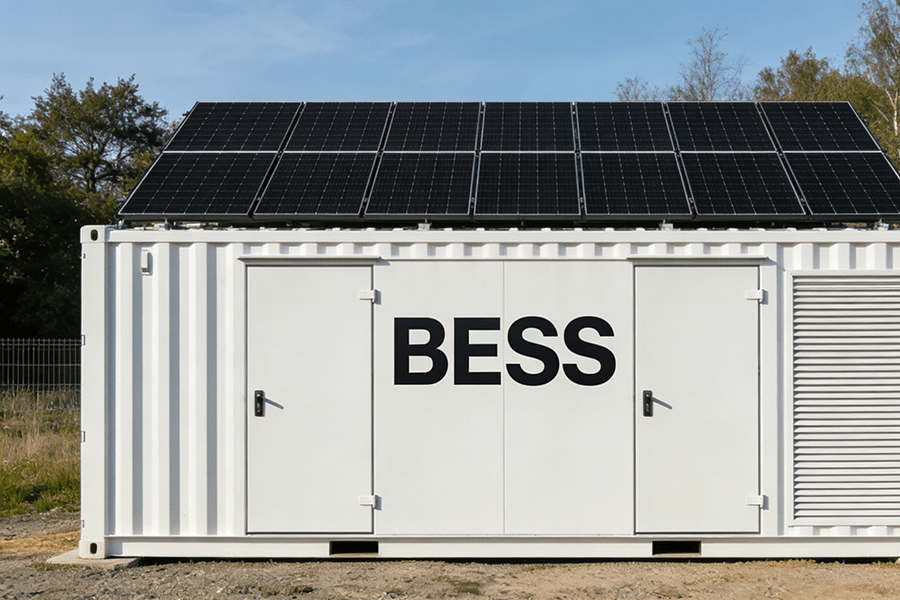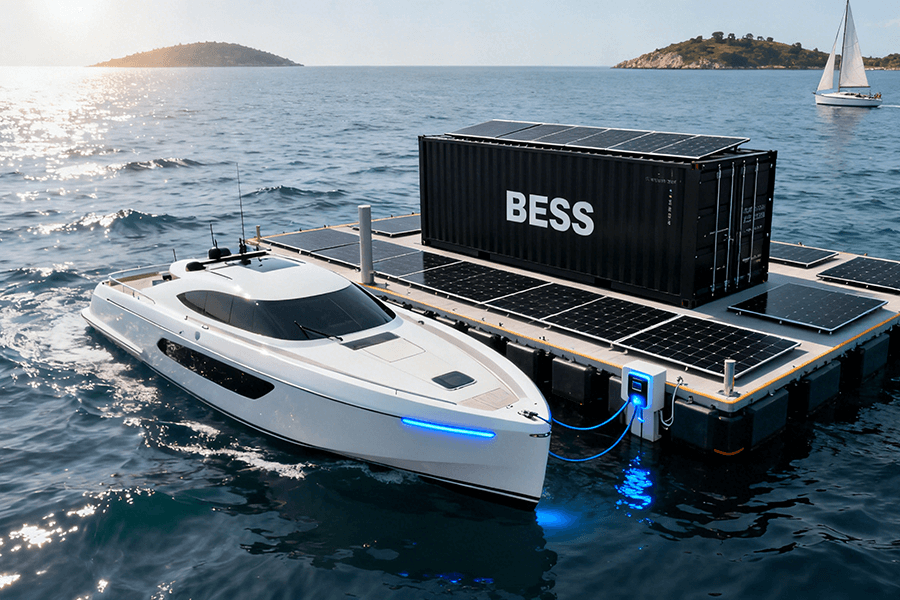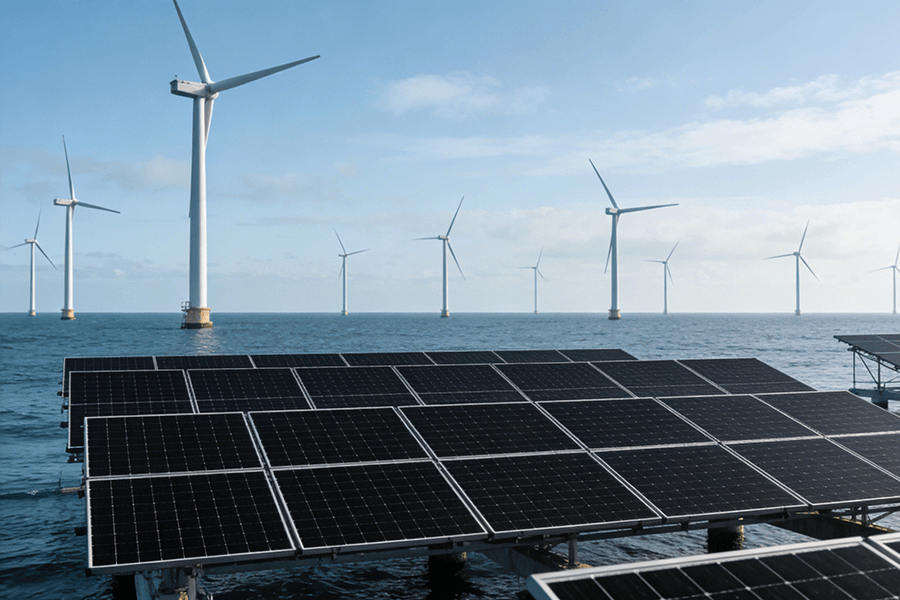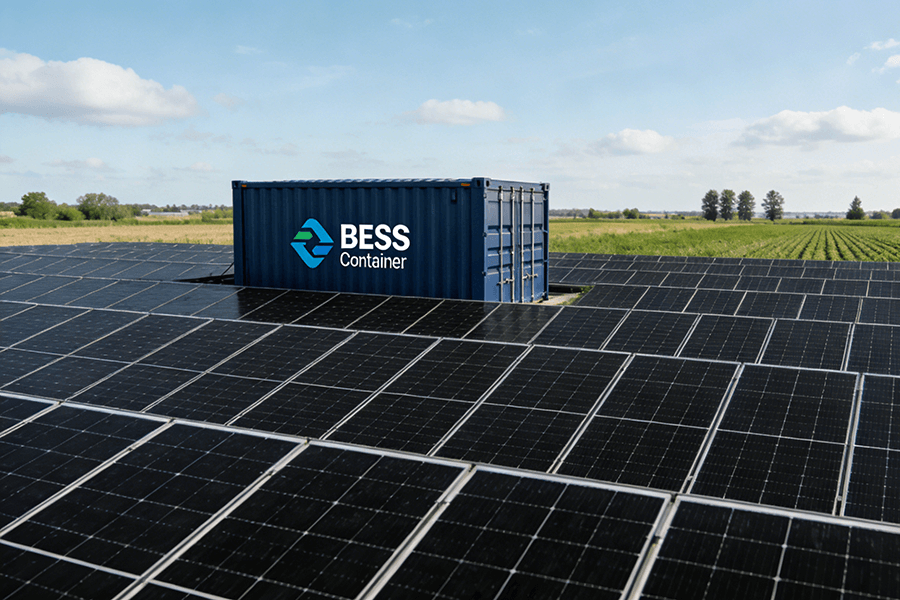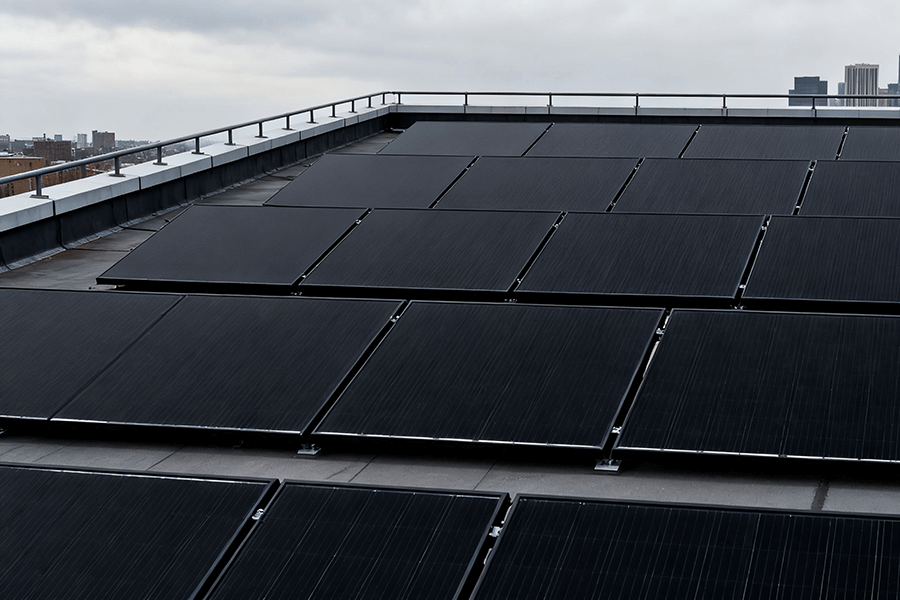
Why Grid Standby Capacity Is Non-Negotiable (And Why Gas Plants Are Falling Short)
Imagine Europe’s power grid as a high-stakes juggling act
Picture this: 27 countries, millions of households, and an ever-expanding blend of wind and solar energy all interconnected. Drop one ball — whether it’s a gas plant outage or a windless day — and the risk of blackouts looms large. This is precisely why EU regulations mandate that grids maintain 15% reserve capacity — a crucial safety net designed to prevent chaos.
To truly grasp the significance of this requirement, consider the following:
- In a grid with a peak demand of 100 gigawatts (GW), a staggering 15 GW of capacity must be held in reserve at all times.
- This reserve isn’t just a theoretical number; it’s a critical buffer that ensures the grid can handle unexpected surges in demand or sudden losses in generation.
The era of gas peaker plants: A costly and inefficient solution
For decades, gas peaker plants have served as the primary backup power source for European grids. However, it’s time to face the facts: they’re the grid’s “slow, expensive uncle.” Here’s why:
- Response time: It takes these plants a painful 5–10 minutes to ramp up from standby to full operation — an eternity in the high-speed world of power grids.
- Cost: Keeping gas peaker plants idle comes with a hefty price tag. We’re talking ongoing maintenance, fuel storage, and staff salaries — all adding up to a fortune.
The financial implications of relying on gas peaker plants are nothing short of staggering:
- Operating costs: A typical gas peaker plant can cost upwards of $100 per megawatt-hour (MWh) to operate, and that’s just the variable cost.
- Total costs: Factor in the fixed costs of keeping the plant ready for operation, and the price per MWh can easily double.
- Real-world example: In 2022, Germany was forced to reboot coal plants to conserve gas — a costly workaround that not only contradicted its climate goals but also highlighted the inefficiencies of traditional backup power sources.
Enter BESS containers: The future of grid standby capacity
Enter the Battery Energy Storage System (BESS) containers — compact, portable, and ready to spring into action in milliseconds. These innovative solutions are the grid’s new “quick-change artist,” poised to replace the gas-guzzling old guard. Here’s how BESS containers are revolutionizing grid standby capacity services:
- Instant response: Unlike gas peaker plants, BESS containers can respond instantly to grid fluctuations, providing a reliable and cost-effective alternative.
- Game-changing solution: With their ability to deliver power on demand, BESS containers offer a reliable and cost-effective alternative to traditional backup power sources, making them a key player in Europe’s transition to a more sustainable energy future.
|
Feature
|
Gas Peaker Plants
|
BESS Containers
|
|
Response Time
|
5–10 minutes
|
Milliseconds
|
|
Cost per MWh
|
$100+
|
Significantly lower
|
|
Environmental Impact
|
High CO2 emissions
|
Zero emissions
|
|
Flexibility
|
Low
|
High
|
With their rapid response times, low operating costs, and minimal environmental impact, BESS containers are poised to revolutionize the way Europe manages its grid standby capacity.
Why BESS Containers Are Stealing the Show
Let’s get granular: BESS containers win on two critical fronts—speed and cost. Here’s how they stack up against gas peakers:
Instant Activation: Faster Than a Barista Making Espresso
Maintaining grid frequency stability is a delicate balancing act, especially in European power grids where the standard frequency hovers at 50Hz. A drop below 49.5Hz can quickly escalate into a full-blown blackout, disrupting the lives of millions and causing significant economic losses. In Germany alone, a 2023 study estimated that a nationwide blackout lasting just one hour could cost the economy over €2 billion. This high-stakes environment transforms the speed of response from a convenience into an absolute necessity.
Traditional Peaker Plants: A Dwindling Solution
Traditional gas-fired peaker plants, once the cornerstone of grid emergency management, now exhibit significant limitations. These plants, similar to a vehicle navigating a complex startup sequence, require a frustrating 5–10 minutes to ramp up from idle to full operational capacity. Their multi-step process—including fuel ignition, turbine warm-up, and synchronization with the grid—makes them ill-suited for modern grids experiencing rapid fluctuations due to renewable energy integration. By the time these plants reach full power, the grid may already be in crisis, highlighting the need for a more agile solution.
BESS Containers: The New Gold Standard
Enter BESS (Battery Energy Storage System) containers: the unsung heroes of grid stability. These state-of-the-art energy storage systems leverage lithium-ion battery technology to deliver unparalleled responsiveness. Unlike their mechanical counterparts, BESS containers can transition from standby to full power in milliseconds—faster than the blink of an eye or the time it takes to utter the words “grid emergency.” This near-instantaneous response time provides grid operators with a crucial edge in managing unexpected fluctuations in power supply and demand.
Case Study: UK National Grid Simulation
A 2024 simulation by the UK National Grid vividly illustrated the superiority of BESS containers. When simulating a sudden 500MW generation drop—a scenario that could easily trigger a widespread blackout—BESS containers restored grid frequency to within acceptable limits in a mere 0.8 seconds. In stark contrast, gas peaker plants took a glacial 6.4 minutes to achieve the same result, making BESS containers 8 times faster in critical response situations. The following table summarizes this performance gap:
|
Response Metric
|
BESS Containers
|
Gas Peaker Plants
|
|
Time to Stabilize (500MW drop)
|
0.8 seconds
|
6.4 minutes
|
|
Relative Speed Advantage
|
N/A
|
8x slower
|
|
Response Metric
|
BESS Containers
|
Gas Peaker Plants
|
|
Time to Frequency Restoration
|
0.8 seconds
|
6.4 minutes
|
|
Response Speed Ratio
|
1x
|
8x slower
|
This remarkable speed advantage can mean the difference between a minor grid disturbance and a neighborhood losing power for hours. As European grids increasingly rely on intermittent renewable energy sources like wind and solar, the role of BESS containers in ensuring grid resilience is set to become even more critical.
Low Idle Costs: No More Paying for “Doing Nothing”
Gas peaker plants are not only slow to respond but also exorbitantly expensive to maintain when idle. These plants require:
- A dedicated team of technicians to monitor their operations around the clock
- A constant supply of natural gas to keep them ready for activation
- Regular maintenance and tune-ups to ensure optimal performance
These costs can quickly add up, with each gas plant racking up an annual idle expense of €150,000–€300,000.
In contrast, BESS containers offer a revolutionary alternative, operating on a “set-it-and-forget-it” principle. Their advantages include:
- Minimal human intervention
- Virtually no ongoing fuel costs
- Only occasional software updates for peak performance, eliminating the need for full-time staff or constant fuel supply
A case study from Germany, shared by the Bundesnetzagentur (the country’s energy regulator), highlights the significant cost savings achievable with BESS containers. A regional transmission system operator (TSO) replaced five gas peaker plants with BESS containers and achieved:
- A staggering €2 million reduction in annual idle costs
- This dramatic reduction was largely due to eliminating costly maintenance and fuel storage expenses, proving that BESS containers can deliver both superior performance and substantial cost savings.
Table 1: BESS Containers vs. Gas Peakers: The Cost-Speed Showdown
|
Metric
|
BESS Containers
|
Gas Peaker Plants
|
Source
|
|
Activation Time
|
<100 milliseconds
|
5–10 minutes
|
|
|
Annual Idle Cost
|
€5,000–€10,000/MW
|
€50,000–€80,000/MW
|
|
|
Fuel Required (Standby)
|
None
|
Natural gas (stored on-site)
|
|
|
CO₂ Emissions (Standby)
|
0 kg/MW
|
150–200 kg/MW (from idle heat)
|
|
|
Maintenance Requirements
|
Occasional software updates and inspections
|
Regular mechanical, electrical, and safety checks
|
|
|
Operational Flexibility
|
Can be rapidly deployed and reconfigured
|
Limited flexibility; requires significant time for reconfiguration
|
Dominating Europe’s Standby Market Segments
BESS containers aren’t a one-trick pony. They’ve emerged as a versatile solution, excelling in both short-term and seasonal standby services—two of Europe’s most critical grid needs. These services not only enhance grid reliability but also drive the region’s transition towards a sustainable energy future.
Short-Term Standby (1–4 Hours): The “Quick Fix” Champion
Grid operators often grapple with the need for fast, temporary reserves to address unexpected fluctuations in power generation, such as a sudden wind lull. In these situations, Battery Energy Storage System (BESS) containers shine.
Their key advantages lie in:
- Rapid Response: The ability to rapidly discharge energy provides immediate relief to grid strain.
- Flexible Recharging: Their flexibility allows for overnight recharging using cost-effective solar and wind power. This cycle not only optimizes energy usage but also significantly reduces operational costs.
Spain has been at the forefront of leveraging BESS containers for short-term standby services. In 2025, a significant milestone was reached when Red Eléctrica de España (REE) contracted 100MW of BESS capacity for this purpose.
|
Service Type
|
Annual Cost per kW
|
|
BESS (Spain)
|
€12/kW
|
|
Gas Plants
|
€25–€30/kW/year
|
The annual cost of €12/kW for BESS services represents a remarkable saving compared to gas plants. With Spain’s ambitious plan to develop 2.2GW of new BESS projects by 2027, it’s clear that the adoption of BESS containers for short-term standby is set to accelerate, further solidifying their role in the country’s energy infrastructure.
Seasonal Standby (Winter/Summer Peaks): Beating the Cold (and Heat)
Seasonal peaks, especially during winter and summer, present unique challenges to the European grid.
Winter: A Period of Heightened Vulnerability
Historically, winter has been a time of significant vulnerability. In 2022, Germany faced a critical situation when temperatures dropped to -10°C, bringing the country perilously close to exhausting its gas supplies. This event underscored the risks of over-relying on gas-fired power during peak demand periods.
BESS Containers: A Strategic Solution
In response, Transmission System Operators (TSOs) across Europe are increasingly looking to BESS (Battery Energy Storage System) containers as a viable alternative to constructing new gas plants. A prime example is France’s Réseau de Transport d’Électricité (RTE).
In 2025, RTE made a strategic addition of 200MW of BESS standby capacity to address winter peak demands. This decision had multiple benefits:
- Enhanced Grid Resilience: Strengthened the stability of the power grid.
- Substantial Cost Savings: Avoided an estimated €150 million in gas plant investments.
During periods of high heating demand, these BESS containers smoothly provide additional power, reducing France’s dependence on imported gas. In 2022, the cost of imported gas reached a staggering €180/MWh. This transition not only improves energy security but also aligns with Europe’s broader objectives of decarbonization and sustainable energy management.
Our Role at Maxbo Solar: Powering Europe’s Grid Future
As a key player at Maxbo Solar (www.maxbo-solar.com), I’ve witnessed the revolutionary impact of Battery Energy Storage System (BESS) containers on European power grids.
Our commitment to innovation is deeply ingrained in every aspect of our operations:
- Research & Development: Pioneering cutting-edge technologies
- Engineering Excellence: Meticulous design and prototyping
- Manufacturing Precision: Rigorous quality control processes
Our approach transcends conventional battery manufacturing. We engineer grid lifelines—solutions meticulously crafted to:
- Meet stringent EU regulatory requirements
- Ensure seamless integration with existing power infrastructure
- Adhere to the highest industry standards
2024 Milestone: 150MW BESS Deployment in Germany
In 2024, we achieved a significant breakthrough by supplying 150MW of containerized BESS solutions to a German Transmission System Operator (TSO) for seasonal standby services. These advanced units embody the forefront of energy storage technology, offering:
- Lightning-Fast Activation: 50 milliseconds—4x faster than the EU’s 200ms requirement
- Exceptional Reliability: 99.8% uptime rate, providing round-the-clock grid support
These capabilities enable our BESS containers to serve as a robust buffer, effectively mitigating power fluctuations and preventing outages.
|
Technical Parameter
|
Value
|
Significance
|
|
Activation Speed
|
50 ms
|
Enables near-instantaneous response to grid demands
|
|
Uptime Rate
|
99.8%
|
Guarantees continuous availability and reliability
|
|
Capacity
|
150MW
|
Supports large-scale grid stabilization
|
What sets our offerings apart is the seamless integration of BESS with solar panels, a game-changing approach that maximizes the potential of renewable energy sources. This innovative combination enables our containers to recharge using clean, renewable energy, thereby significantly reducing dependence on the traditional power grid and minimizing carbon emissions.
By harnessing the power of the sun, we not only enhance the sustainability of our solutions but also contribute to the overall decarbonization of the energy sector, aligning with Europe’s ambitious climate goals.
The success of our BESS containers is best illustrated by the experience of one of our Spanish clients, a large industrial complex with high energy demands. In their first year of operation, they reported savings of €300,000 in idle costs, a testament to the efficiency and cost-effectiveness of our solutions.
As the facility manager stated:
“Maxbo’s BESS saved us €300,000 in idle costs in the first year—we should’ve dumped gas plants sooner.”
This testimonial encapsulates our overarching objective: to make standby capacity solutions more cost-effective, responsive, and environmentally friendly, empowering businesses and communities to embrace a sustainable energy future.
Conclusion: The Grid’s New “Workhorse” Is Here to Stay
BESS containers aren’t just an alternative to gas plants—they’re the future. With instant activation, near-zero idle costs, and success in Spain, France, and Germany, they’re the grid’s “reliable workhorse” for the energy transition.
The numbers back this up: The IEA predicts global BESS capacity will hit 600GW by 2035, with Europe accounting for 25% . Our forecast? BESS containers will provide 40% of Europe’s standby capacity by 2035—replacing half of today’s gas peakers.
For EU grid operators, the choice is clear: Stick with slow, expensive gas plants, or switch to BESS containers. Spoiler: The grid (and your budget) will thank you.

